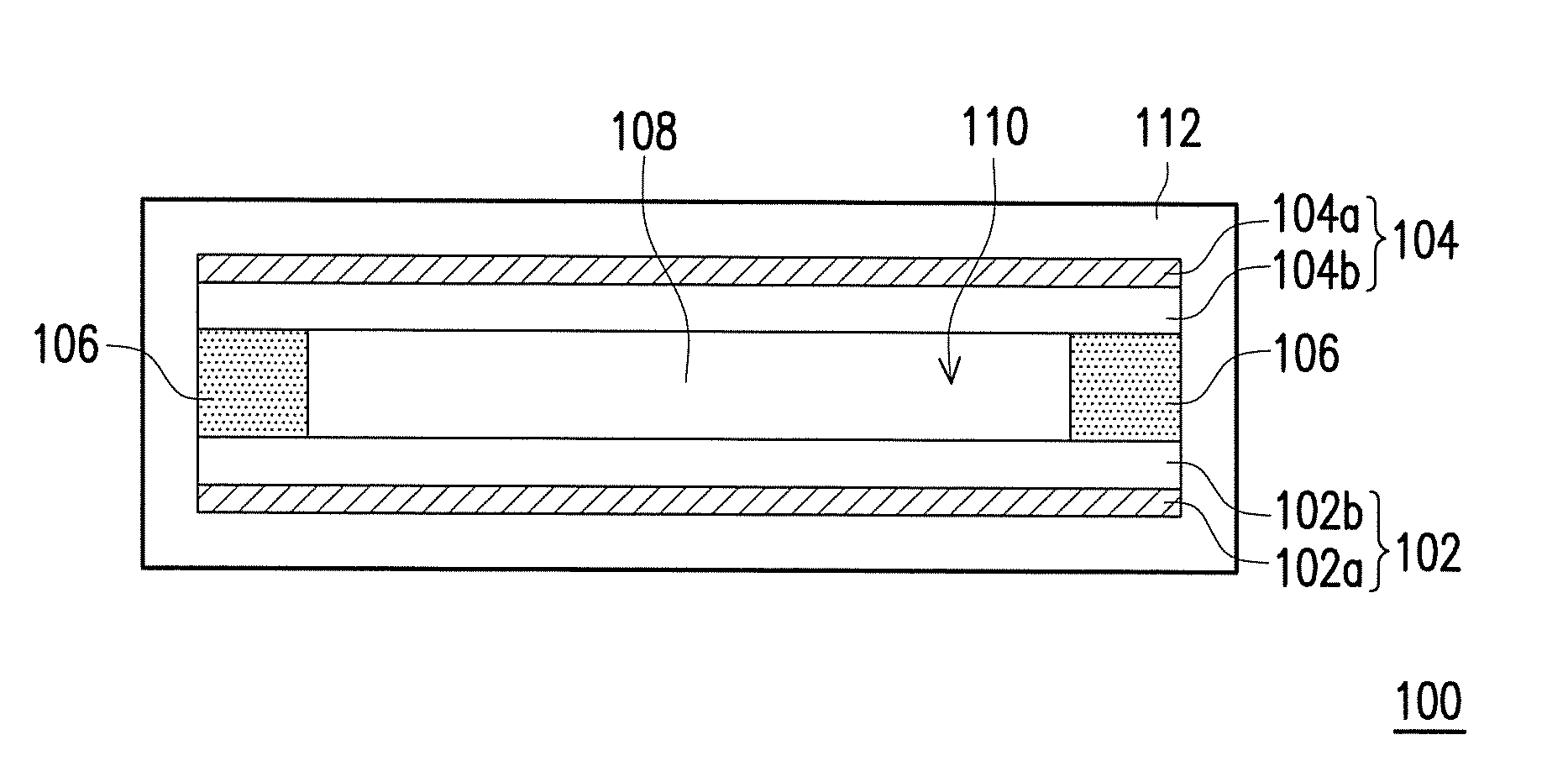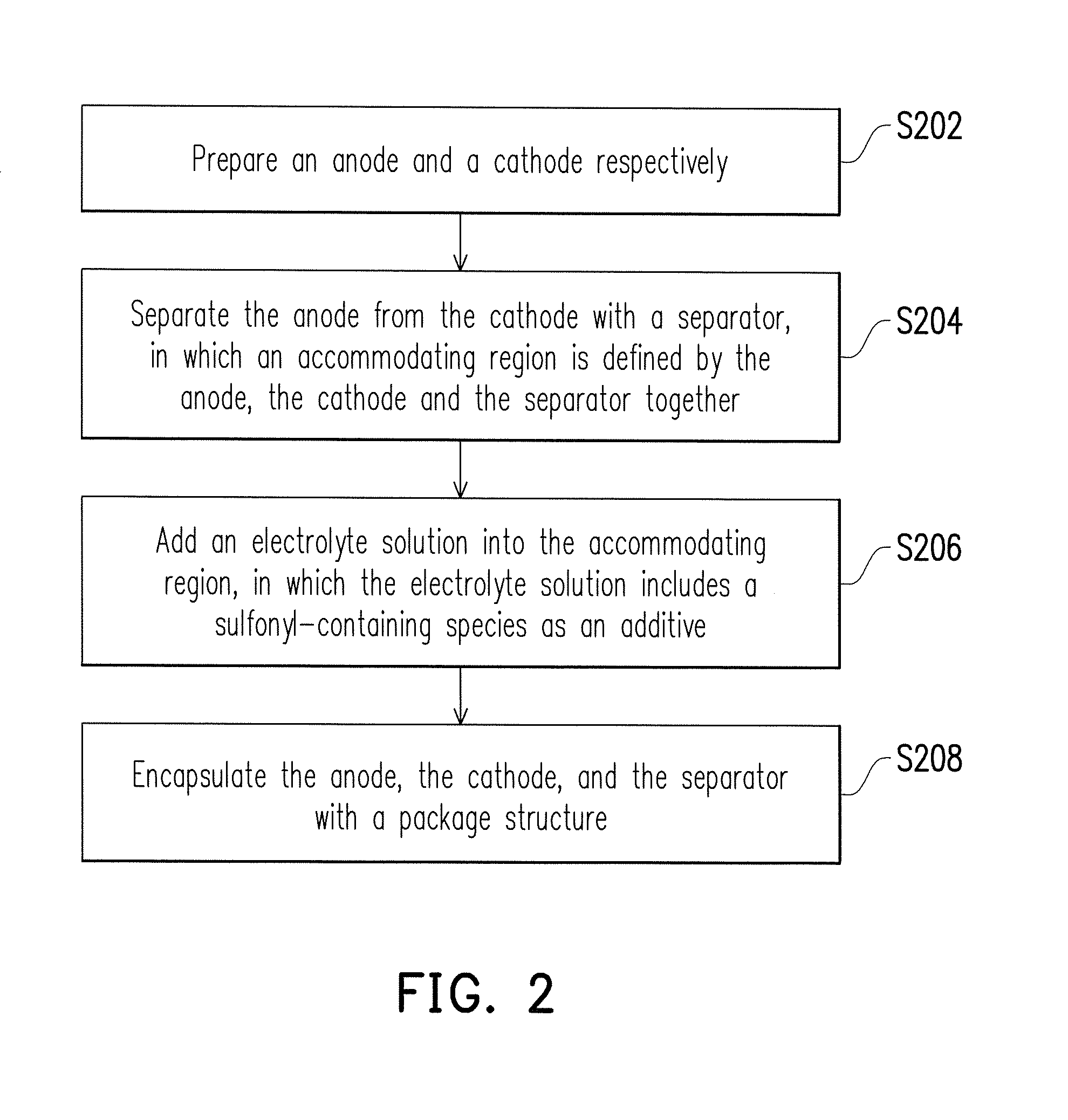Lithium-ion battery and method for fabricating the same
a lithium-ion battery and high-voltage technology, applied in the field of lithium-ion batteries, can solve the problems of expansion and degraded battery performance, limited increased risk of use, etc., and achieve the effect of broadening the application range of lithium-ion batteries and improving the operation voltage and the performance of lithium-ion batteries
- Summary
- Abstract
- Description
- Claims
- Application Information
AI Technical Summary
Benefits of technology
Problems solved by technology
Method used
Image
Examples
example 1
[0044]85 parts by weight of LiNi0.5Mn1.5O4, 5 parts by weight of polyvinylidene difluoride (PVDF), and 10 parts by weight of acetylene black (conductive powder) were dispersed in N-methyl-2-pyrrolidinone (NMP), and a resulting slurry was coated onto an aluminum foil, and then dried, compressed, and cut, to form a cathode core.
[0045]95 parts by weight of graphite (maso carbon micro board, MCMB) and 5 parts by weight of PVDF were dispersed in NMP, and a resulting slurry was coated onto a copper foil, and then dried, compressed, and cut, to form an anode core.
[0046]In addition, 1 part by volume of ethylene carbonate (EC) and 1 part by volume of diethyl carbonate (DEC) were mixed and used as an organic solvent of an electrolyte solution. LiPF6 was added, in a concentration of 1M, into the organic solvent and used as a lithium salt of the electrolyte solution, and then 1,3-propanediol cyclic sulfate was added and used as an additive of the electrolyte solution. 1,3-propanediol cyclic sul...
example 2
[0053]85 parts by weight of LiNi0.5Mn1.5O4, 5 parts by weight of PVDF, and 10 parts by weight of acetylene black (conductive powder) were dispersed in N-methyl-2-pyrrolidinone (NMP), and a resulting slurry was coated onto an aluminum foil, and then dried, compressed, and cut, to form a cathode core.
[0054]95 parts by weight of graphite (MCMB) and 5 parts by weight of PVDF were dispersed in NMP, and a resulting slurry was coated onto a copper foil, and then dried, compressed, and cut, to form an anode core.
[0055]In addition, 1 part by volume of EC and 1 part by volume of DEC were mixed and used as an organic solvent of an electrolyte solution. LiPF6 was added, in a concentration of 1M, into the organic solvent and used as a lithium salt of the electrolyte solution, and then divinyl sulfone was added and used as an additive of the electrolyte solution. Divinyl sulfone had a structure as shown in Formula (1-4), and the content thereof was 1.0 wt % based on the total weight of the electr...
PUM
| Property | Measurement | Unit |
|---|---|---|
| electrochemical potential | aaaaa | aaaaa |
| operation voltage | aaaaa | aaaaa |
| reduction potential | aaaaa | aaaaa |
Abstract
Description
Claims
Application Information
 Login to View More
Login to View More - R&D
- Intellectual Property
- Life Sciences
- Materials
- Tech Scout
- Unparalleled Data Quality
- Higher Quality Content
- 60% Fewer Hallucinations
Browse by: Latest US Patents, China's latest patents, Technical Efficacy Thesaurus, Application Domain, Technology Topic, Popular Technical Reports.
© 2025 PatSnap. All rights reserved.Legal|Privacy policy|Modern Slavery Act Transparency Statement|Sitemap|About US| Contact US: help@patsnap.com



